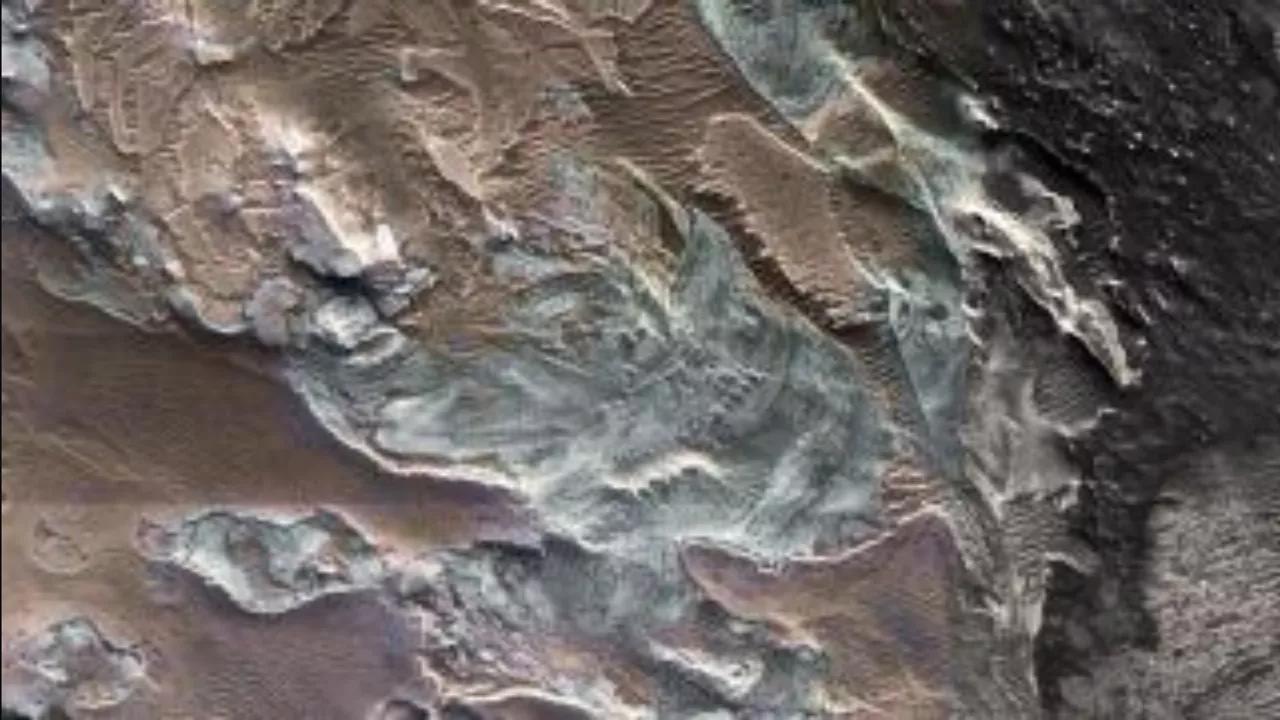Africa-Press – Namibia. Planetary scientists have found the remains of an ancient glacier near the equator of Mars, which consists mainly of deposits of salts. However, it may still contain water ice, isolated from the external environment.
It is now known that there are deposits of water ice in the polar regions of Mars. However, the question of whether there are ice deposits in the middle and equatorial latitudes of the planet remains a matter of debate.
A team of planetary scientists led by Pascal Lee of the SETI Institute has reported finding evidence of a relic glacier in the eastern part of the Noctis Labyrinthus. The discovery was made while analyzing data from several instruments of the Mars Reconnaissance Orbiter.
No water ice was found in the sediments, but hydrated and hydroxylated sulfates were found. These salts were probably formed as a result of the interaction of volcanic ash or pyroclastic sediments with glacial ice in the past.The glacier is 160 kilometers northwest of the Oudemans Crater, about 2-4 kilometers wide and at least 6 kilometers long. It consists of light sediments showing a linear and arc-shaped structure. There are also concentric and wedge-shaped fracture patterns and folds.
Over time, the glacier lost all or most of its ice reserves, but salt deposits remained, preserving the primary morphology of the glacier. Perhaps some amount of ice still exists inside the glacier, isolated from the outside environment by sediments.
A report on the results of the work was presented at the 54th Lunar and Planetary Science Conference (LPSC).
For More News And Analysis About Namibia Follow Africa-Press






